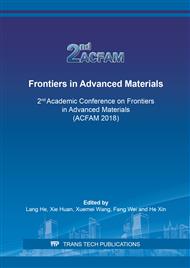p.3
p.12
p.21
p.35
p.46
p.55
p.69
p.78
Tailor the Rheological Properties of Silver Front Side Metallization Paste for Crystalline Silicon Solar Cells
Abstract:
The paper aims to provide the methods to tailor the rheological properties of silver paste for improving the fine line printing properties for crystalline silicon solar cells. The investigation on the internal structure model of silver paste was performed in order to understand the interaction among constituents in silver paste. Much stronger polymer network structure is formed through chain entanglements between thixotropic agent and polymer resin compared with the network structure originated from thixotropic agent. Silver particles have some association with above polymer network structure and form a stronger internal structure of silver paste together. The rheological properties were improved by tailoring the composition of polymer resin, using a combination of controlled flocculating dispersing additive and thixotropic agent, and the addition of nanosized carbon black. The strength of internal network structure can be enhanced by the design of polymer resin composition but without increasing high shear-rate viscosity. Through the combination use of controlled flocculating dispersing additive and thixotropic agent, the strength of network structure and viscosity can be improved. The depletion flocculation induced by the addition of nanosized carbon black introduces a new attraction force between silver particles and strengthens the internal network structure.
Info:
Periodical:
Pages:
12-20
Citation:
Online since:
June 2019
Authors:
Price:
Сopyright:
© 2019 Trans Tech Publications Ltd. All Rights Reserved
Share:
Citation:


